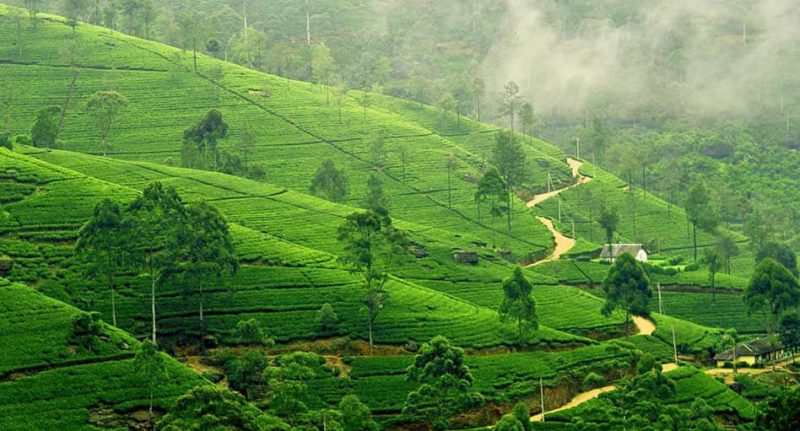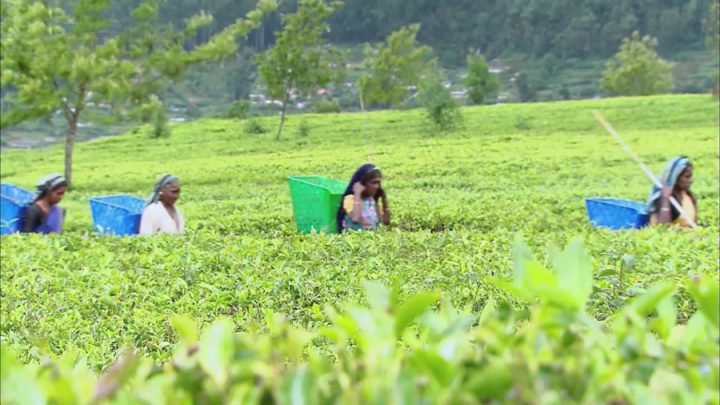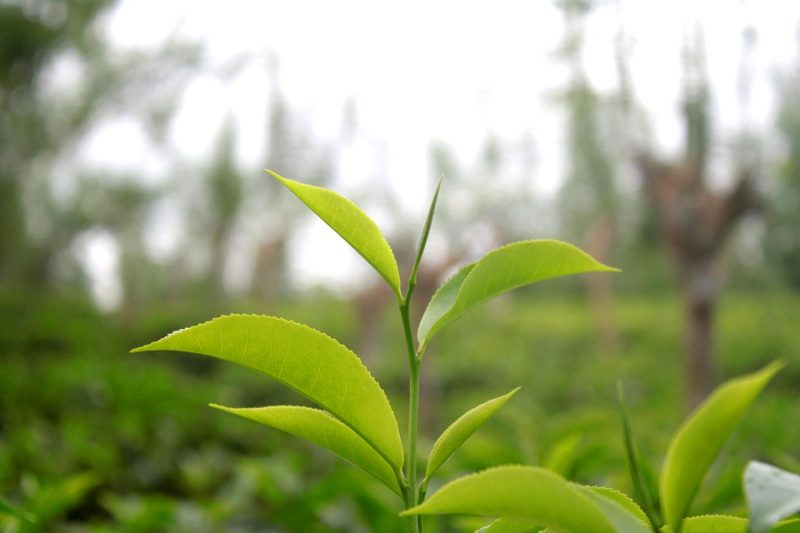Two Leaves and The Bud
A group of skinny women moves swiftly between tea bushes while carefully picking the tender leaves from every and each bush passing by. They engage in this tedious task for many hours without any break, until their sack, which is resting on their shoulder is swelled as it is about to explode. Afterwards, it is weighed and emptied into a lorry, which transports the precious leaves to the nearby tea factory.
The women are clad in very beautiful colourful dresses marching the up and down the mountains while picking the precious leaf. From the distance, they seem like dots painted on a light green carpet. This is a very common sight for the passer-by of Pussallawa and Gampola on Nuwara Eliya–Kandy main road. The well-maintained tea gardens make a breathtaking sight and every space in the mountain is occupied by this commercial crop, except few plots of vegetable gardens.
The Ceylon Tea is known as the best Tea in the world is coming from this tiny island of Sri Lanka and it grows in the mountains, where the elevation is above 4000 feet above sea level. Perhaps Tea is the single most important agriculture product of Sri Lanka and the tea industry is the most important industry for the people in the tea grown areas. According to the statistics around 1.5 million people, directly and indirectly, are working in the Tea industry.

Ceylon, undoubtedly the most popular country for the finest tea in the world is known as Sri Lanka since the latter part of the 1970s. Tea is produced from the tiny leaves of the tea bush (Camellia sinensis). The production of tea is a complicated and time-consuming process which comprised of four major steps. The steps can be broadly categorized into withering, rolling, fermenting and drying and sorting.
One of the most important factors, which decide the quality of tea, is the elevation. Ceylon tea grows in different locations at different elevations. Depending on the elevation of the tea stat, tea is divided into three categories namely low-grown tea (0-2000 feet), mid-grown tea (2000-4000 feet) and high-grown tea (above 4000 feet).
The tea grown in the low elevated area is described as a strong tea. They are the darkest in the colour of all tea varieties in the country. Strong taste and weak aroma are the other noteworthy characters in low-grown tea. The low-grown tea is superb when it mixed with milk. Low-grown tea is mainly to be found in areas in the west and southern parts of the country.
High-grown tea grows in the mountainous areas such as Nuwara Eliya, Dimbula and Badulla. They show the quite opposite characters with regards to the taste, aroma and colour of low-grown tea. They are very mild in taste, pale coloured and strong in the aroma. High-grown tea can be consumed without the addition of foreign materials such as sugar or milk due to its mild taste.
The tender leaf of tea is withered for several hours once it removed from the bush. Depending on the elevation it may take more than 4 hours.
The second step of the tea production is the rolling, in which the withered leaf is broken into small pieces with a roller.

The third step of the process is known as fermentation and it can be described as the most important step of tea production which decides the quality of the product. Fermentation should be closely monitored since it decides the difference between good quality and low-quality tea.
After fermentation tea is put into an oven with the temperature of 80C˚. Later the dried tea is removed from the oven and cleaned with machines. In the last step, the foreign particles that are mixed with tea are removed with an automated process. The modern machines such as colour sorting machine have been used to make accurate and speedy cleaning process.
Rich history, refining tea-producing techniques and colourful culture of tea make Ceylon by far the most popular tea-producing nation in the world. Today, tea is not only the most loved thirst quencher for the people of the island but also one of the most important foreign exchange earners for the economy of Sri Lanka.
Our articles under the title “Places to visit in Sri Lanka“
- 10 Best Places To Visit In Sri Lanka For Honeymoon In 2021
- 15 Best places to visit in Sri Lanka in 3 days
- 7 Places To Visit In Sri Lanka South Coast Itinerary
- 22 places to visit in Sri Lanka in 5 days
- 12 best places to visit in Sri Lanka in 2 days
- 15 Places to Visit In Sri Lanka In Two Weeks
- 18 Best Places to Visit in Sri Lanka in 14 Days
- 10 Places To Visit In Sri Lanka Trip Itinerary
- Places To Visit In Sri Lanka In 6 Days
- Best places to visit in Sri Lanka off the beaten track
- Places to visit in sri Lanka within one day
- Places to visit in Sri Lanka in 4 days
- Places To Visit In Sri Lanka In 7 Days
- 10 Best Places to Visit in Sri Lanka Itinerary 8 Days
- What are the 20 Best Places to Visit in Sri Lanka in December?
- What are the 6 best places to visit on a 5-day trip to Sri Lanka?
- 7 PLACES TO VISIT ON SRI LANKA HERITAGE TOURS
- 10 Places To Visit In 9 Days In Sri Lanka Car Tours
- 8 Days In Sri Lanka And 15 Best Places To Visit
- SIGIRIYA ROCK FORTRESS SRI LANKA AND PLACES TO VISIT IN SIGIRIYA
- What are the top 11 places to visit in Mirissa Sri Lanka?
- 17 Best Places To Visit On Sri Lanka Hill Country Tours
- What are the 10 best places to visit on the Kandy tea plantation tour?






